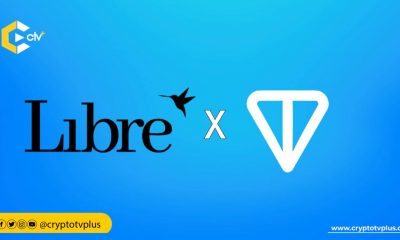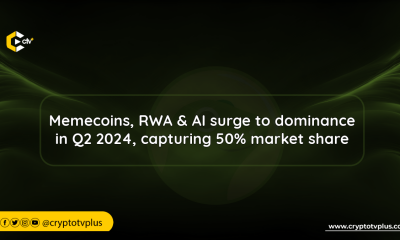News
Xend Finance’s L1 Blockchain, Asset Chain’s Testnet is Now Live

Xend Finance has launched its new layer one blockchain, Asset Chain, on the testnet. This release allows the community to experience seamless RWA tokenization, verification, and management on its native chain.
Xend Finance is a decentralized finance (DeFi) platform that offers financial services to underserved populations, especially in developing countries. By leveraging DeFi protocols, it provides high-yield savings opportunities with interest rates up to 15%.
Initially deployed on Ethereum and Binance Smart Chain, Xend Finance aggregates yields from various DeFi lending protocols like Compound, AAVE, and Yearn Finance. Its native token, $XEND, is used for rewards, purchasing insurance, and protocol governance.
Supported by notable investors, including Binance Labs and Google Launchpad, Xend Finance aims to bridge traditional finance with DeFi, making it accessible to crypto-savvy and non-crypto users.
As part of its move towards the real-world asset (RWA) sector, Xend Finance has selected Asset Chain as the native blockchain for its Real-World Asset Onchain Asset Environment (OAE). This setup aims to facilitate the smooth integration of various legally transactable asset types onto the blockchain.
Asset Chain will be the primary platform for Xend Finance’s initiative to bring real-world assets into the blockchain space, ensuring they can be managed and transacted securely and efficiently on-chain.
Asset Chain operates using Lachesis, an asynchronous Byzantine Fault Tolerant (aBFT) consensus protocol developed by the Fantom Foundation. Lachesis enables the network to handle a high volume of transactions efficiently while ensuring instant confirmation.
This design achieves scalability without compromising decentralization, allowing the network to process numerous transactions quickly without becoming more centralized or vulnerable to attacks.
Asset Chain confirms transactions in about 1–2 seconds and can handle up to 5,000 transactions per second. It can also scale to include hundreds of thousands of nodes, with a minimum of 30,000 RWA required to become a validator.
Per Xend Finance, all testers and community members will receive updates on airdrops. Rewards from blockchain fees will be distributed as follows: 20% to the Xend Finance Ecosystem Treasury and 80% to the validators.
Boston Consulting Group projects that the tokenized asset market will grow to $10.9 trillion by 2030. This represents a significant increase from the current market size and indicates a fundamental asset management and perception transformation.
The asset tokenization market is valued at around $87 billion, with stablecoins accounting for 97%. This suggests that other use cases for asset tokenization (commodities, real estate, collectibles, stocks, bonds, etc.) have significant room for growth.
The potential market for tokenization is vast, as hundreds of trillions of dollars worth of real-world assets are available to come on-chain. Currently, only about 0.03% of the total market size has been exploited, representing a massive opportunity for growth.
Sectors expected to lead in tokenization include real estate, debt, private credit, and stocks. The tokenization of RWAs is seen as a transformative force in finance, set to reshape how we perceive and manage assets while bridging the gap between traditional finance (TradFi) and decentralized finance (DeFi).
























